Abstract
A simple force-of-infection model for onchocerciasis has been developed for a study of the age-specific epidemiological trends during a period of vector control in the Onchocerciasis Control Programme in the Volta River basin area (OCP). The most important factors included in the model are the longevity of an infection, the aspect of super-infection, age-specific exposure, and the intensity of transmission during the pre-control period. The aim of the study was to determine the most appropriate statistics for the epidemiological evaluation in the OCP. There was generally good agreement between the epidemiological trends, predicted by the model, and the observed trends in the prevalence and mean load of microfilariae in skin snips taken from a cohort population from 23 villages in an area with 8 years of successful vector control in the OCP. It is concluded that the epidemiological trends during the control period are not uniform but depend on the initial age and the initial endemicity level of the population. The epidemiological indices for cohorts of children, born before the start of control, will not show a decrease during the first 8 years of interruption of transmission. The prevalence is too insensitive to be useful for the evaluation in hyperendemic villages during most of the control period. The most sensitive and meaningful statistic for a comparative analysis and for the assessment of epidemiological changes is the geometric mean microfilarial load in a cohort of adults. This index, which is called the Community Microfilarial Load (CMFL), is now routinely used in the OCP. The new analytical methodology has enabled a much better appreciation of the significant epidemiological impact of 8 years of vector control in the OCP. Several related aspects of the pre- and post-control dynamics of onchocerciasis infection are also discussed and priorities are formulated for further work on applied modelling of onchocerciasis.
Full text
PDF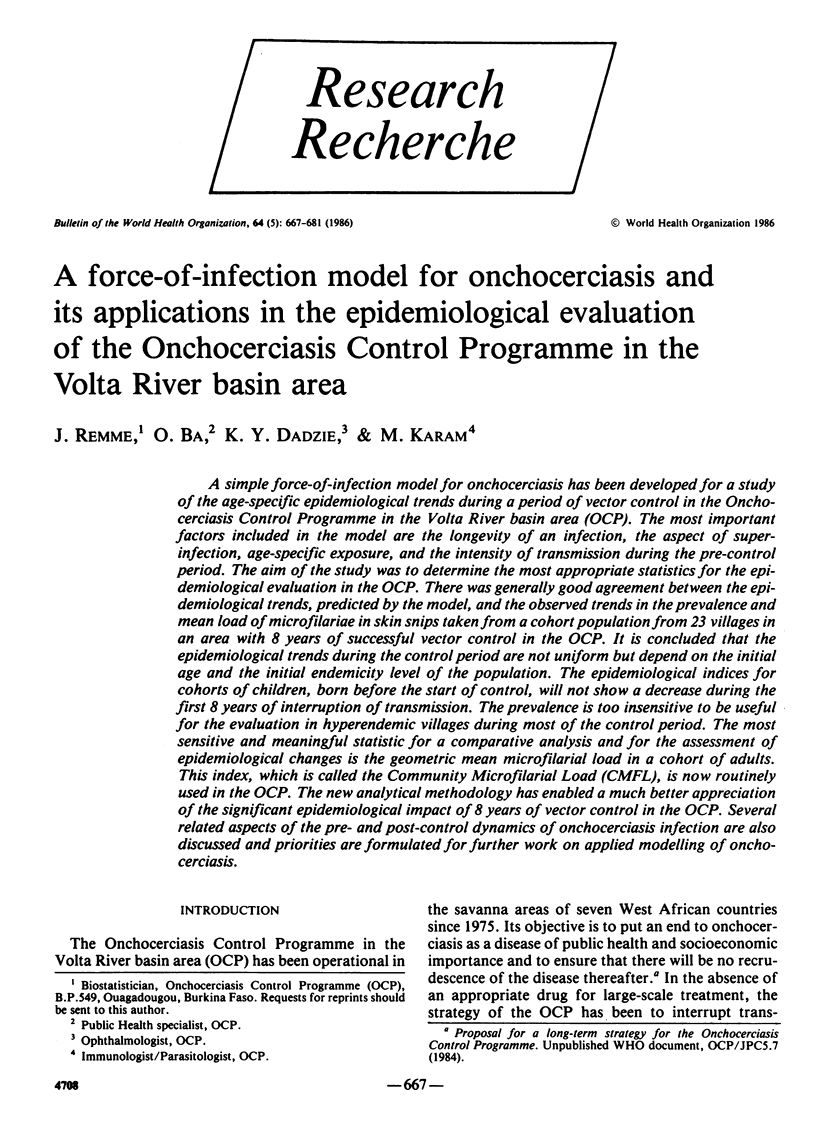
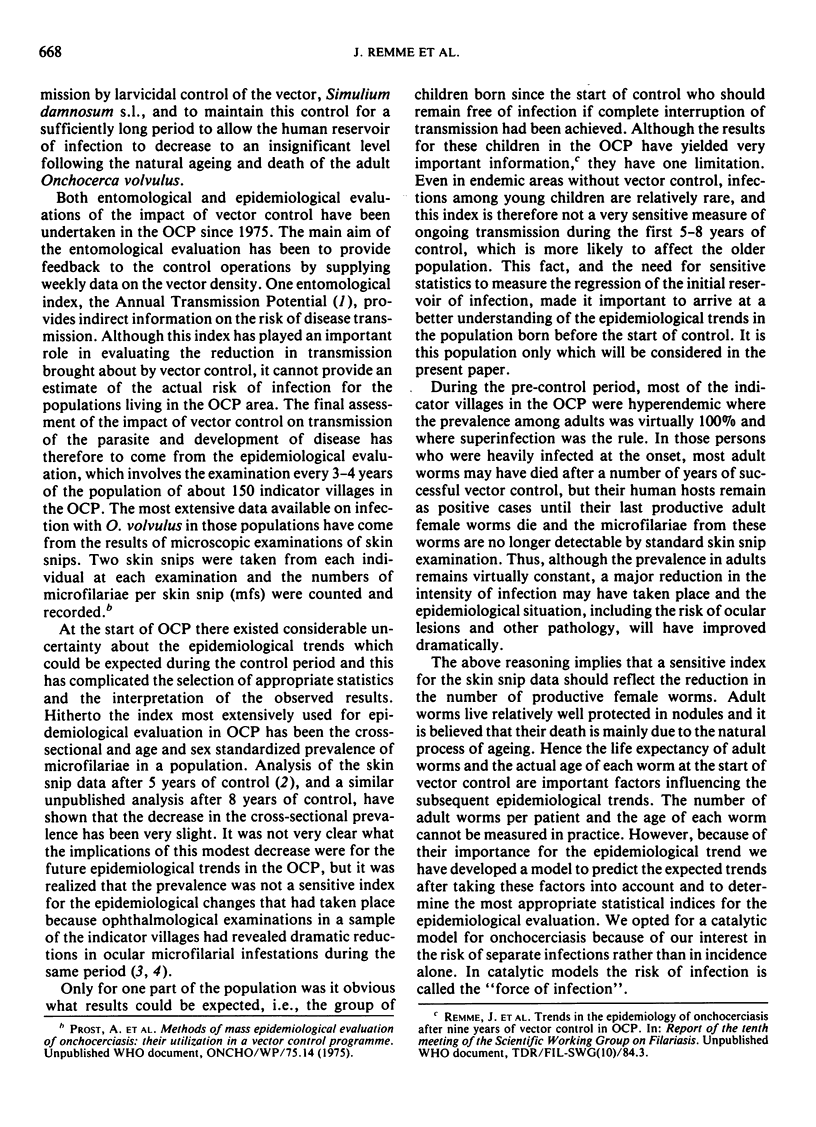
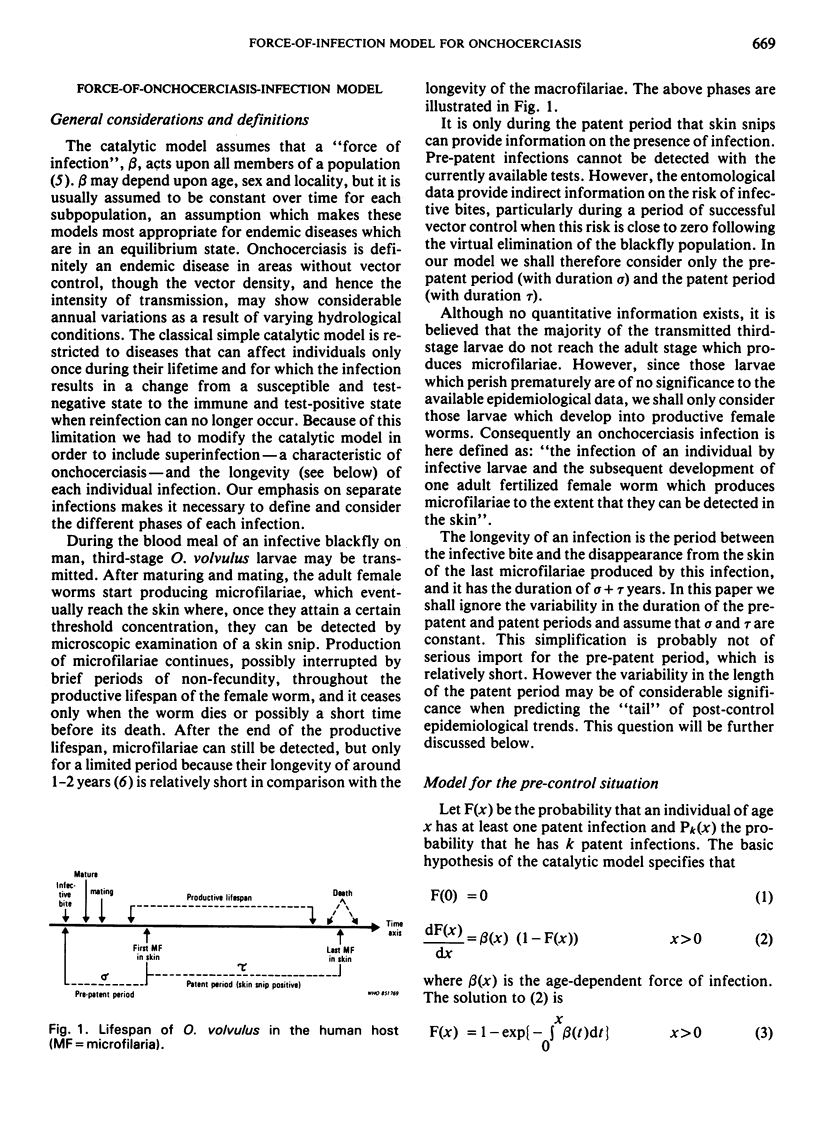
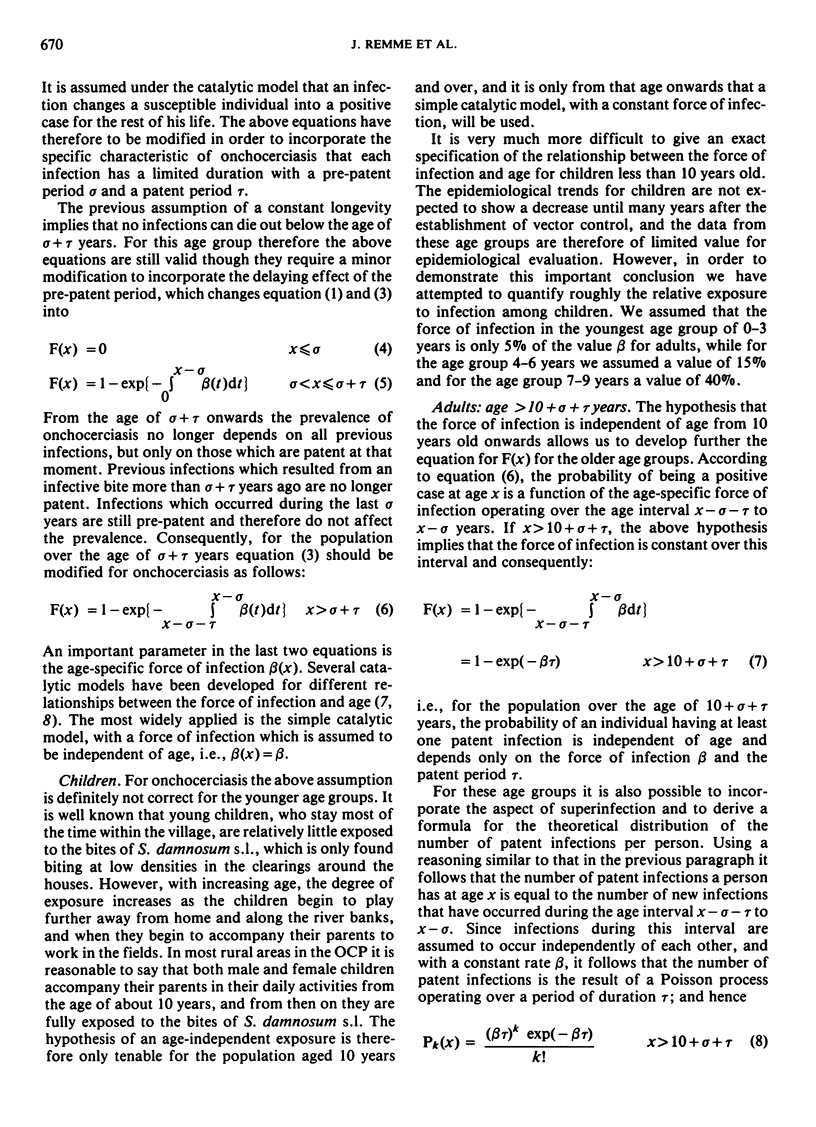
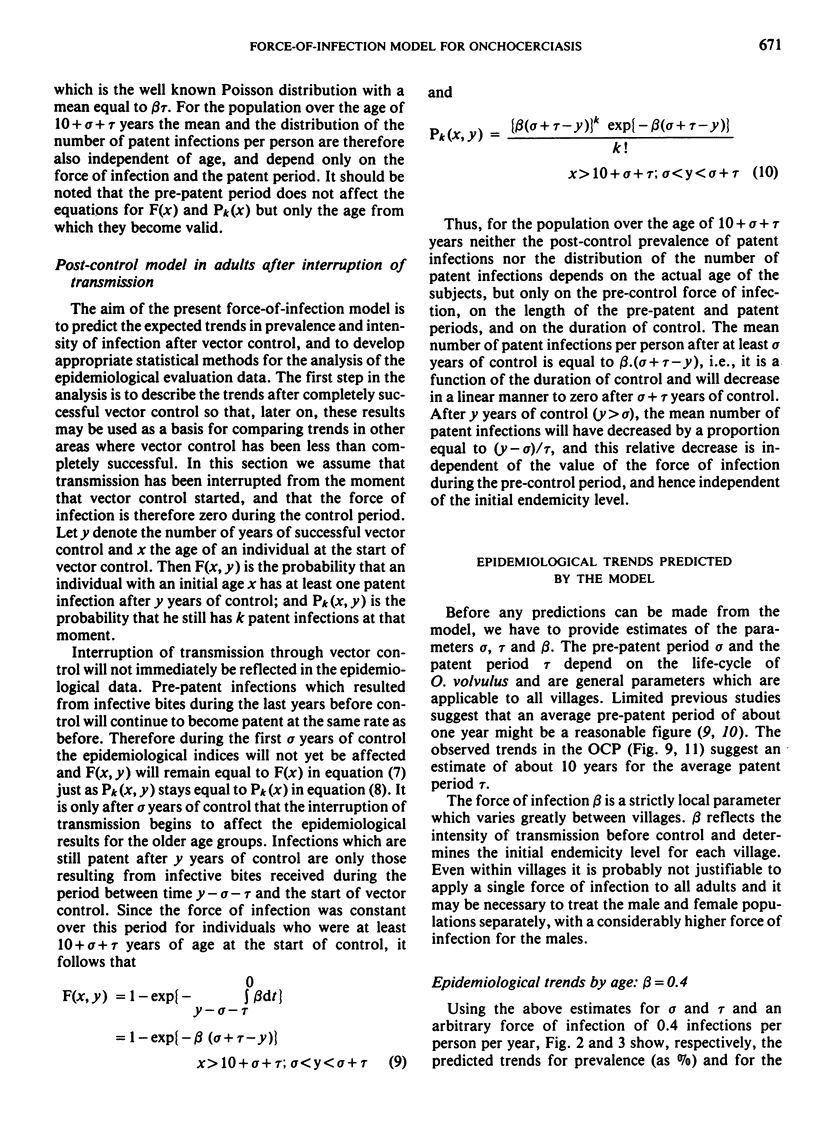
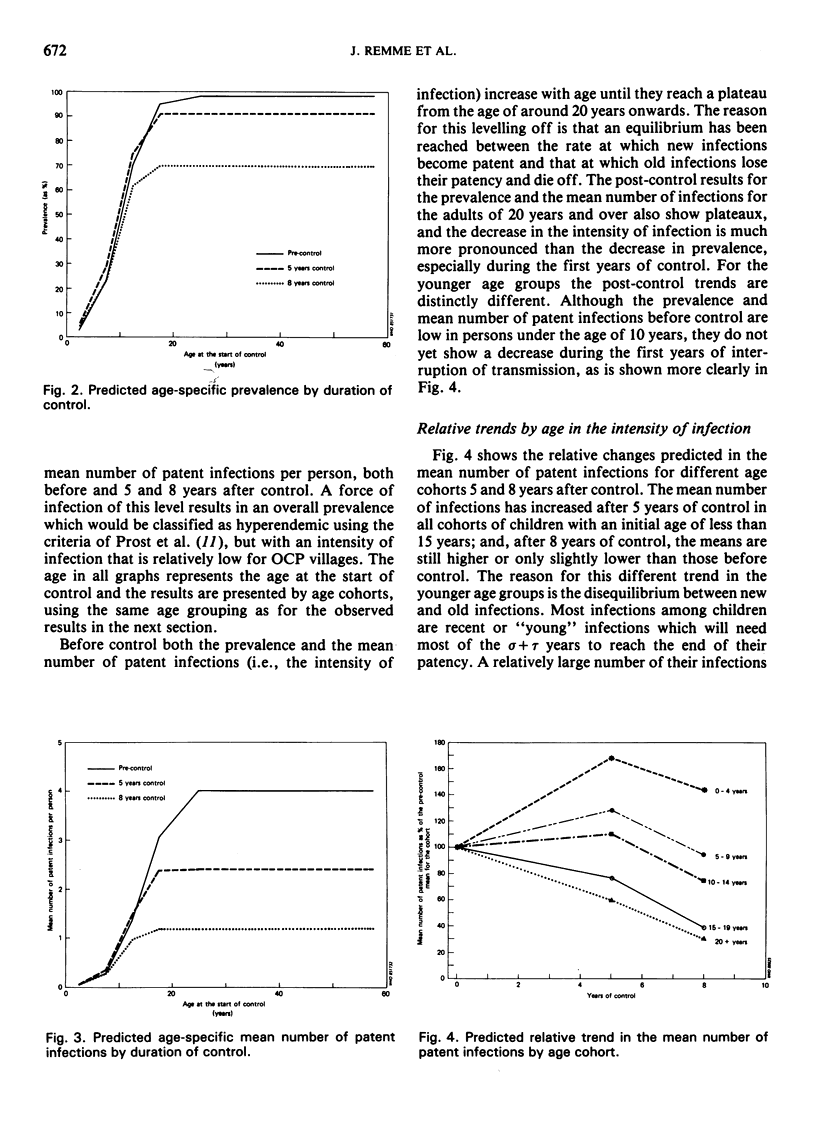
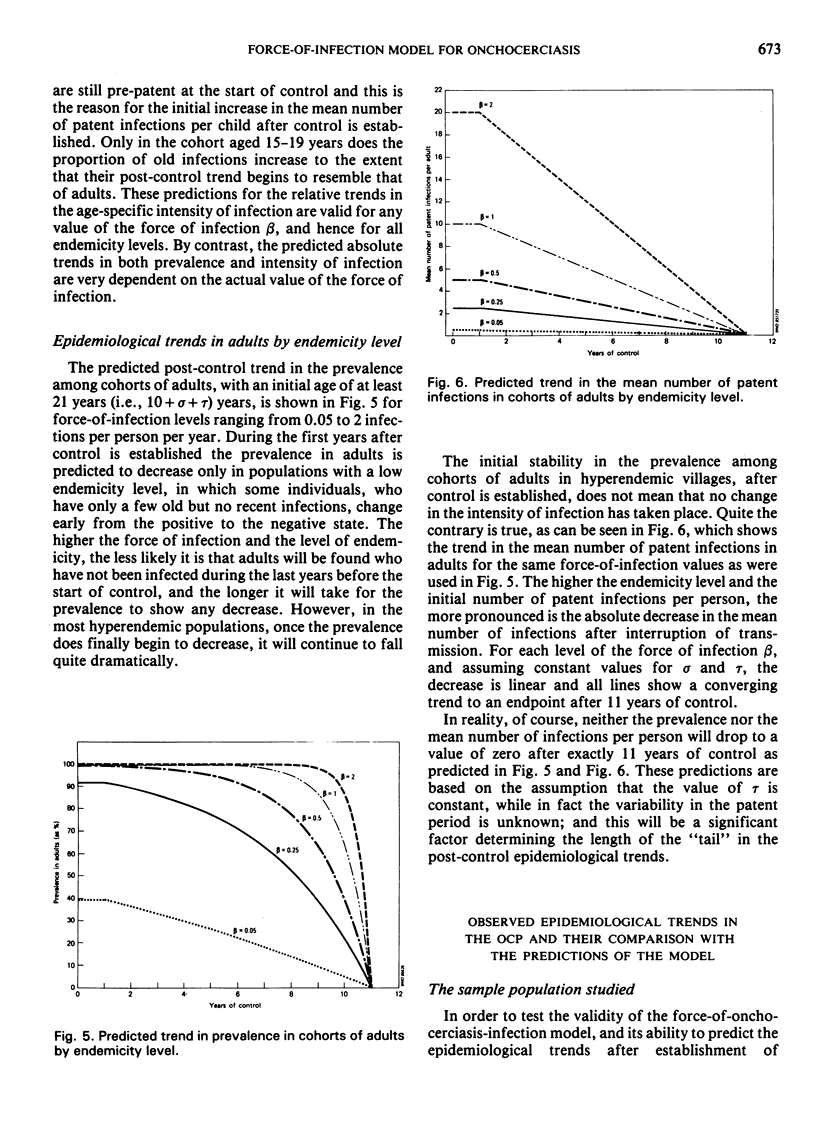
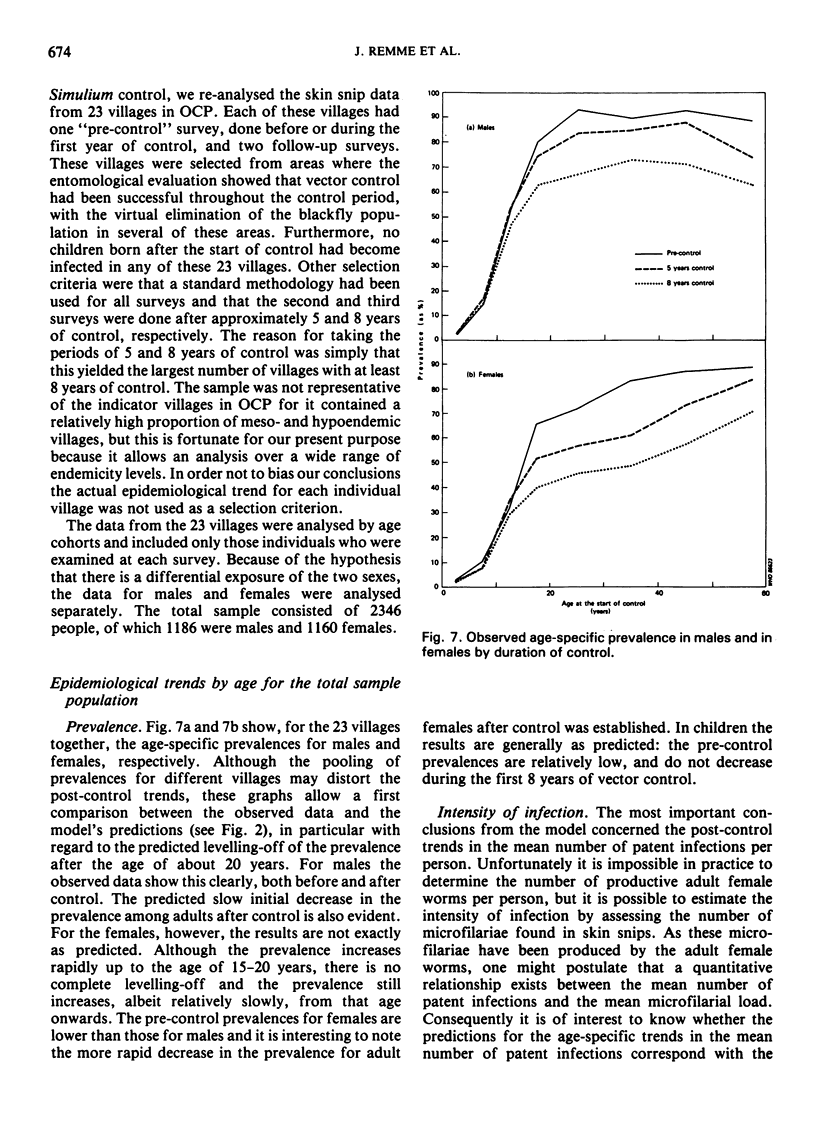
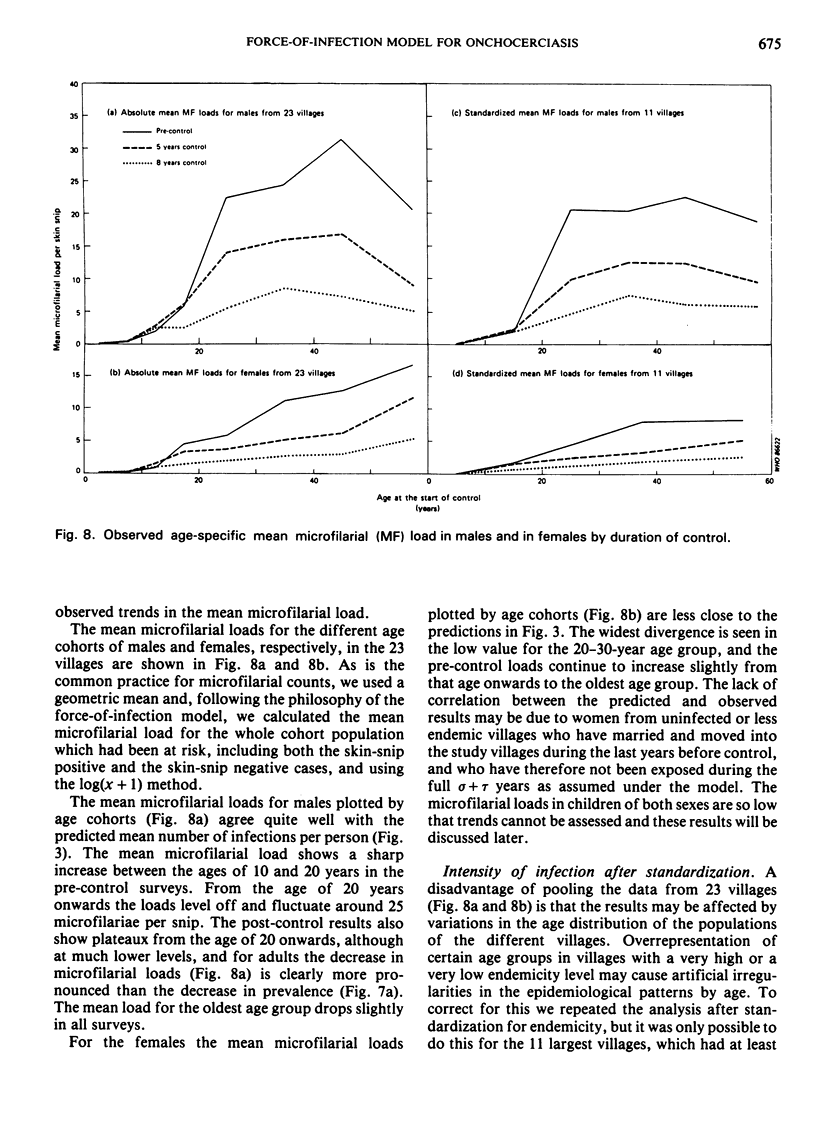
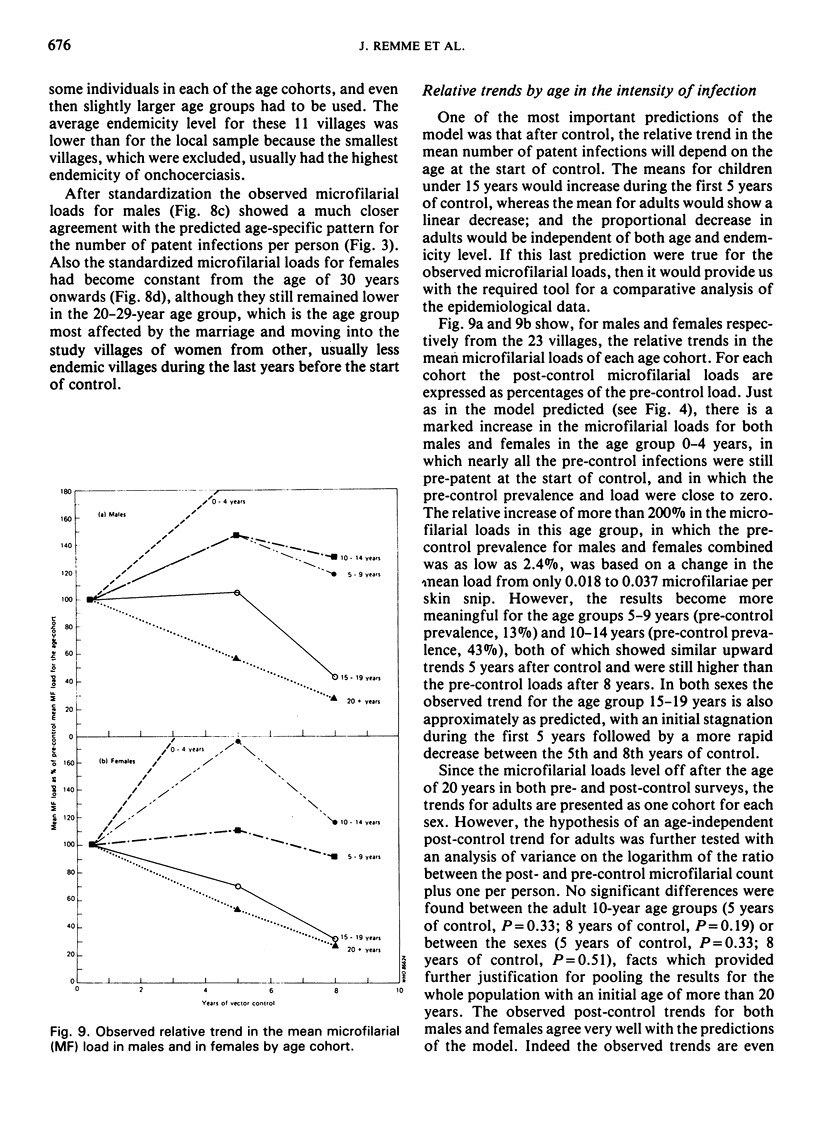
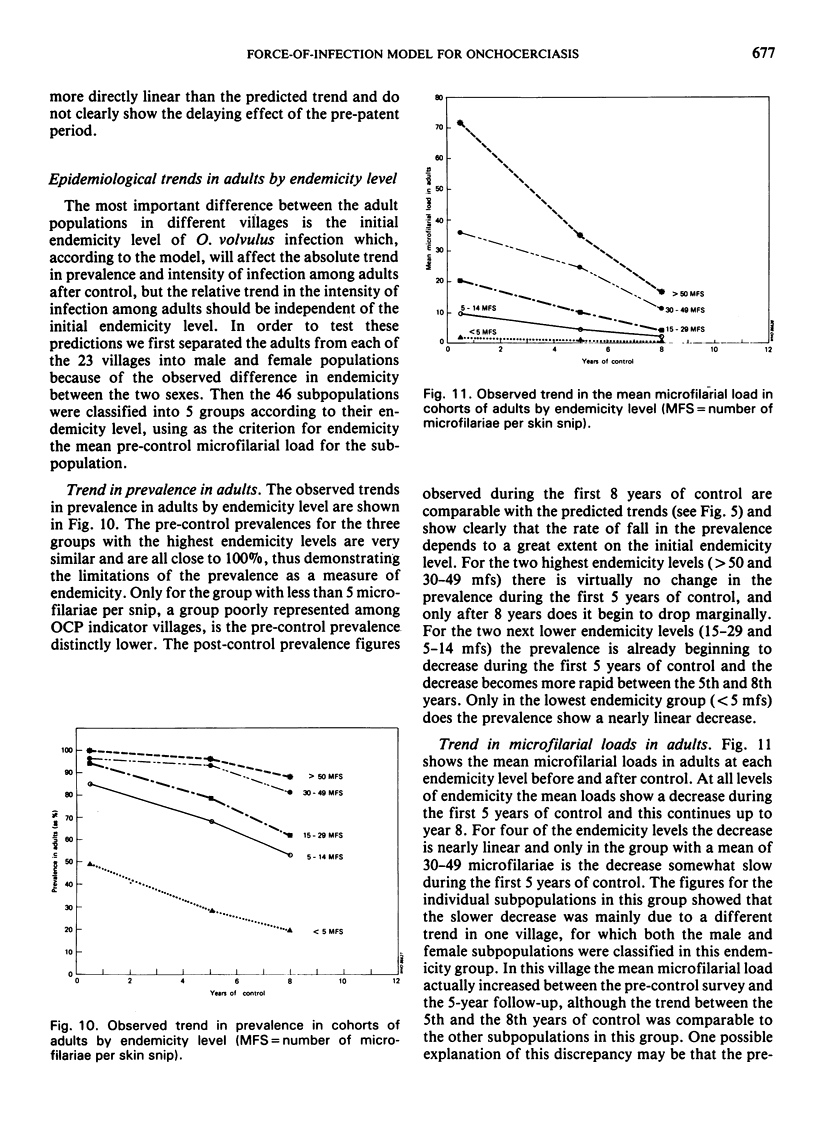
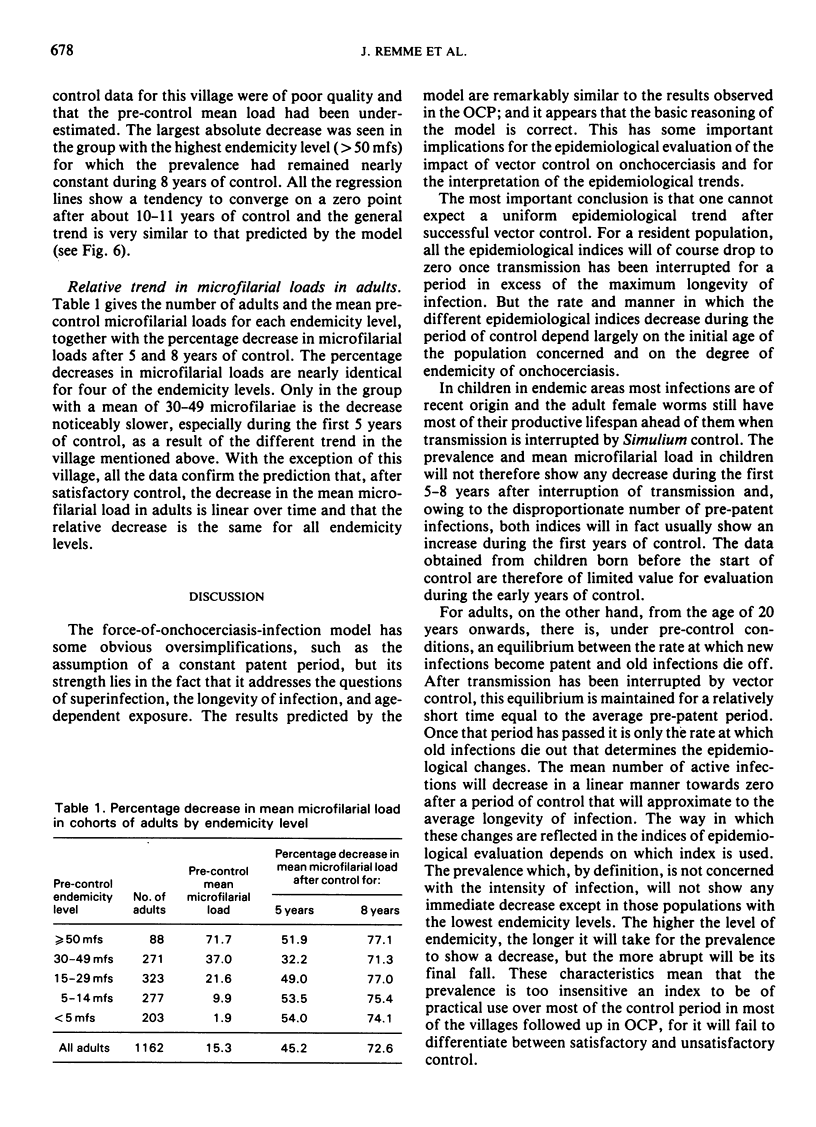
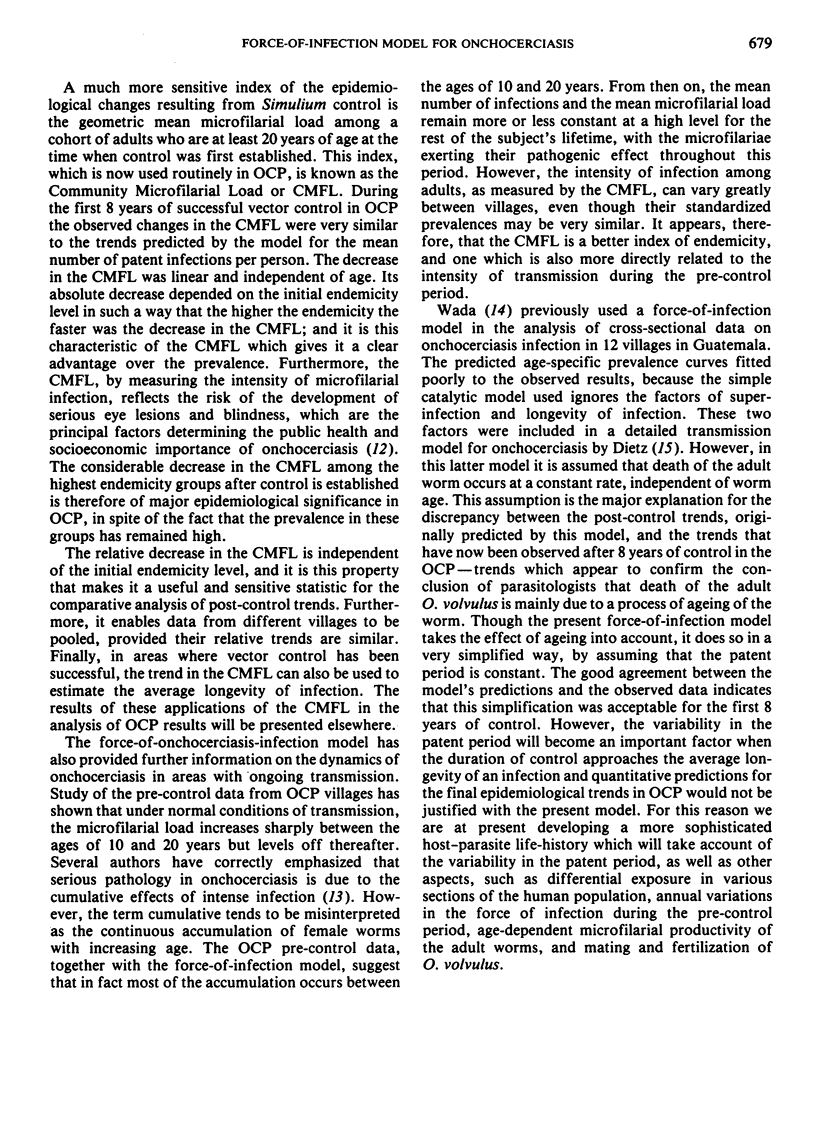
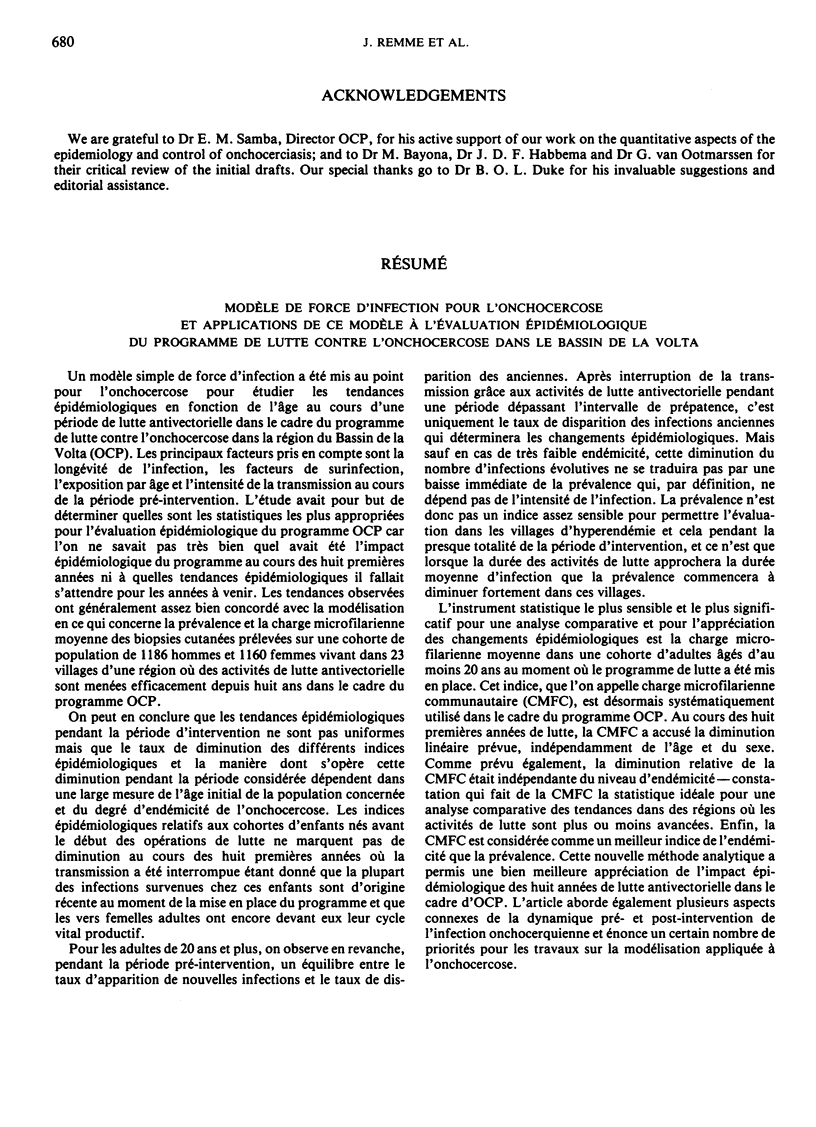
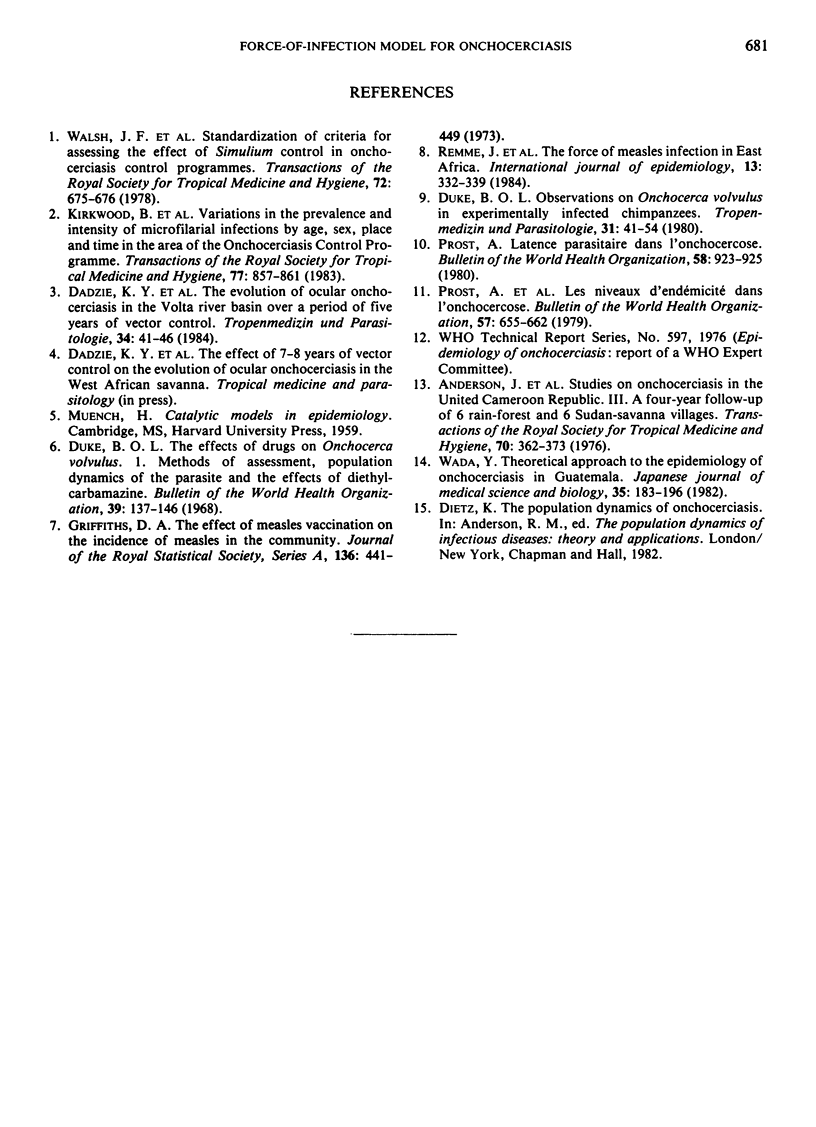
Selected References
These references are in PubMed. This may not be the complete list of references from this article.
- Duke B. O. Observations on Onchocerca volvulus in experimentally infected chimpanzees. Tropenmed Parasitol. 1980 Mar;31(1):41–54. [PubMed] [Google Scholar]
- Duke B. O. The effects of drugs on Onchocerca volvulus. 1. Methods of assessment, population dynamics of the parasite and the effects of diethylcarbamazine. Bull World Health Organ. 1968;39(2):137–146. [PMC free article] [PubMed] [Google Scholar]
- Kirkwood B., Smith P., Marshall T., Prost A. Variations in the prevalence and intensity of microfilarial infections by age, sex, place and time in the area of the Onchocerciasis Control Programme. Trans R Soc Trop Med Hyg. 1983;77(6):857–861. doi: 10.1016/0035-9203(83)90307-3. [DOI] [PubMed] [Google Scholar]
- Prost A., Hervouet J. P., Thylefors B. Les niveaux d'endémicité dans l'onchocercose. Bull World Health Organ. 1979;57(4):655–662. [PMC free article] [PubMed] [Google Scholar]
- Prost A. Latence parasitaire dans l'onchocercose. Bull World Health Organ. 1980;58(6):923–925. [PMC free article] [PubMed] [Google Scholar]
- Remme J., Mandara M. P., Leeuwenburg J. The force of measles infection in East Africa. Int J Epidemiol. 1984 Sep;13(3):332–339. doi: 10.1093/ije/13.3.332. [DOI] [PubMed] [Google Scholar]
- Wada Y. Theoretical approach to the epidemiology of onchocerciasis in Guatemala. Jpn J Med Sci Biol. 1982 Aug;35(4):183–196. doi: 10.7883/yoken1952.35.183. [DOI] [PubMed] [Google Scholar]


